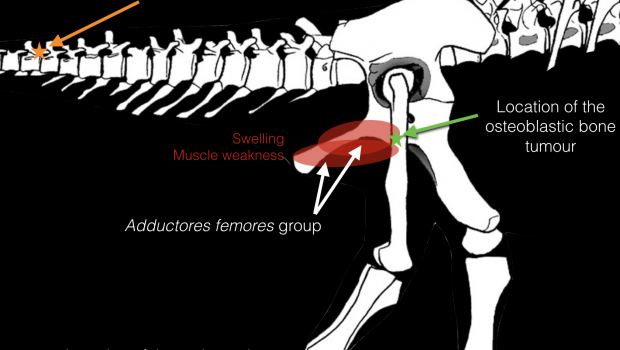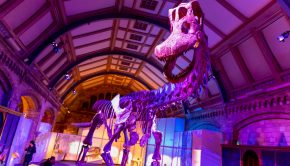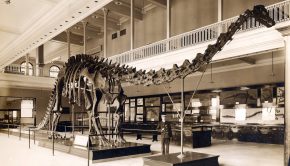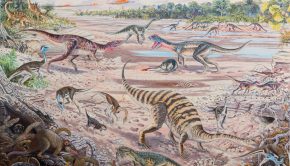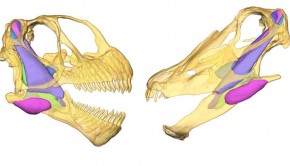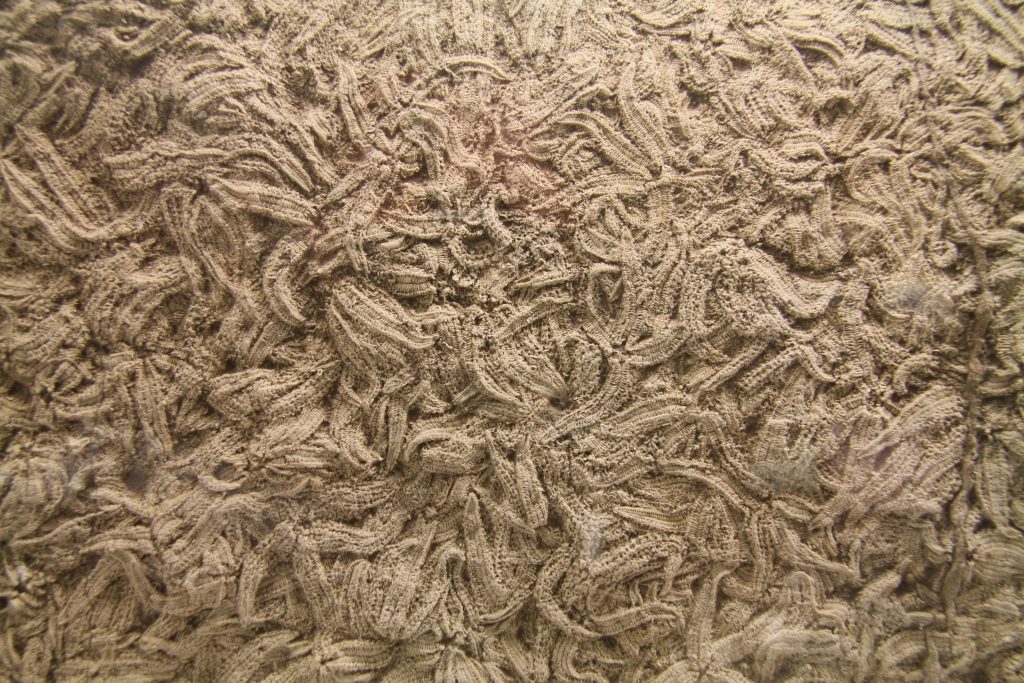Playing Doctor with Titanosaurs
Titanosaurs include some of the largest terrestrial organisms to walk the Earth: globally distributed, multi-tonne behemoths representing the last of the sauropods at the end Cretaceous extinction event. Much about their biology is known, ranging from nesting behaviour to the skin texture of their embryos. Yet the impact of pathologies on these animals is enigmatic; despite the completeness of their fossil record, there are very few documented instances of disease and injury in this clade.
Palaeopathology, the study of disease and trauma in the fossil record, is of particular interest to me as it provides and extremely intimate view into the life of extinct animals, allowing us to piece together, in some cases, the final moments of an individuals life, but also the remarkable ability to survive and persist despite injury or disease. In other instances, these palaeopathologies simply represent curiosities in the fossil record, benign symptoms with little impact on the animal’s welfare. In secondary school, my teachers were pushing me to consider a career in medicine, however complaining humans and their myriad of ailments aren’t particularly interesting. Healed bite marks from a tyrannosaur attack, on the other hand, are right up my street.
Sick sauropods?
This week saw the advanced publication of a detailed description and diagnosis of several pathologies in the bizarre titanosaur sauropod Bonitasaura salgadoi. I say bizarre due to the presence of a sharp, keratin-covered ridge at the back of the jaws, which helped it guillotine plant matter. Native to modern day Patagonia, this Late Cretaceous herbivore measured in at 10m- huge to us, yet tiny compared to some of its cousins.
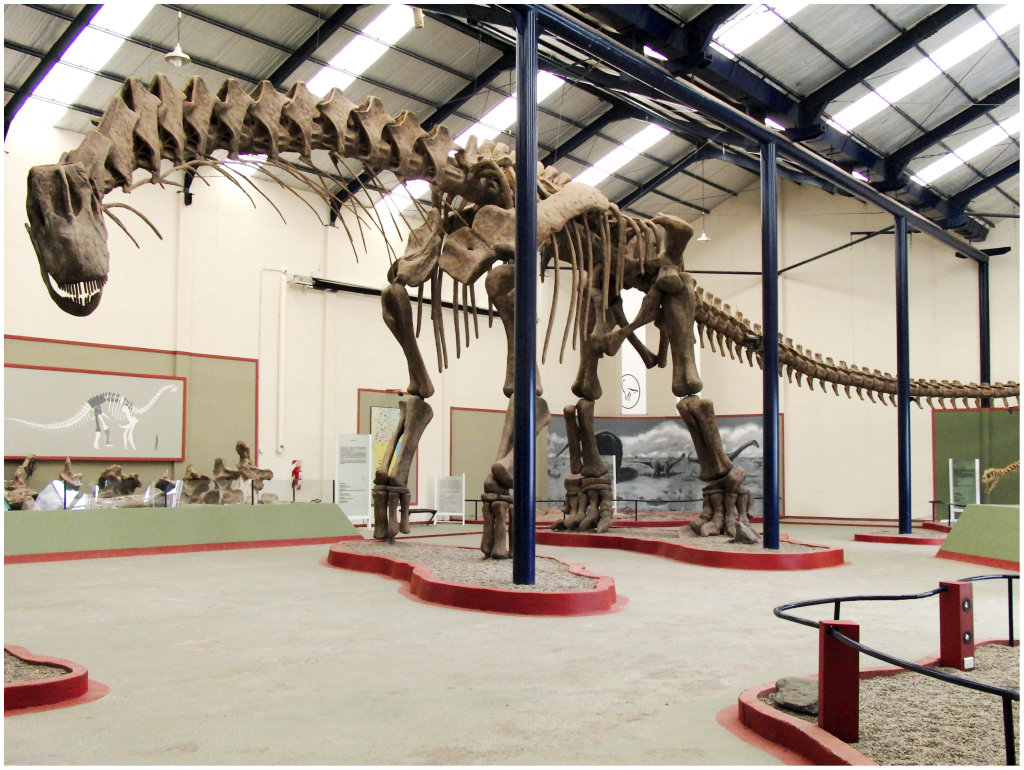
Fig. 1. Titanosaurs, like Argentinosaurus huinculensis, evolved to be amongst the largest terrestrial vertebrates known. Credit: Sellers et al., 2013.
Three abnormal bones were diagnoses, a first for a single titanosaur dinosaur: the left femur and third metatarsal, as well as a caudal vertebra. The femur showed a circular outgrowth bellow the fourth trochanter (a projection at the back of the femur where the huge caudofemoralis muscle of the tail attaches, which helps retract the leg- we briefly looked into it during last week’s post on tyrannosaur locomotion). The ovoid appearance and spiculated texture is classic osteoblastic bone tumour territory. In the absence of soft tissue however, the identity of the specific cancer remains a mystery.
The pathology on metatarsal III is represented by a bony outgrowth on the medial face of the element, roughly 3cm long and in line with the long axis of the bone. This was diagnosed as an enthesophyte, or bone spur, most likely formed as a result of repetitive stress due to the extensor digitorum longus muscle, which inserts in approximately the same place. The body tends to form bone in areas of high stress, in order to provide extra protection.
Finally, the pathology in the caudal vertebra is best seen under a microscope. Bone histology shows a periosteal (the membrane that surrounds most bone surfaces) bone inflammation, typified by a domed shape, with the presence of reactive new bone (fibromellar tissue) and a cavity to drain the infectious agents away from the site.
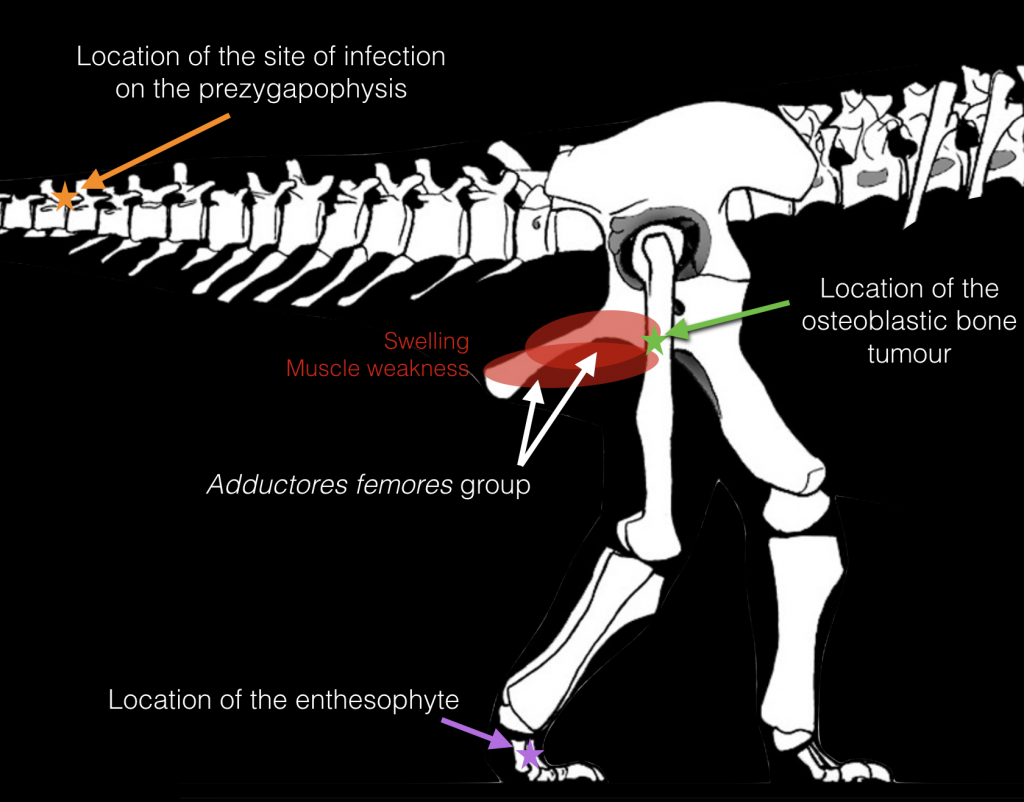
Fig. 2. Location of the pathologies on the skeleton. Muscle attachments based on Neuquensaurus (Otero and Vizcaíno, 2008). Skeleton based on Opisthocoelicaudia (Credit: IJReid/wikicommons).
How did these pathologies affect this individual? In the case of the femur, the authors note that the tumour could have affected the local musculature, including the adductors femores group (responsible for adduction, inward rotation and some retraction). Secondary inflammation (myositis) of these muscles would have resulted in an aching, weakened hind limb, reducing the efficiency of locomotion and possibly putting predators on alert, including Viavenator (we have been previously acquainted with this abelisaurid here at Palaeocast, when we took an in-depth look at its brain anatomy). This, in turn, could have lead to a change in gait, which could have resulted in the enthesophyte on metatarsal III.
The infection in the caudal vertebra could have been due to the fact that in some sauropods, derived titanosaurs included, possibly used their tail as a whiplash. As a result, the caudal elements would be placed in situations that could incur damage or injury, allowing foreign pathogens to enter and proliferate. The infection is described as local by the authors, but would have been nevertheless sore.
Why is the titanosaur record so pathologically poor?
Our Bonitasaura was clearly suffering from several conditions and a myriad of symptoms, yet the titanosaur fossil record is rather poor in pathologies. Table 1 shows the complete list of titanosaur individuals showing disease or injury. Hardly A&E on a Friday night. The following is by no means a rigorous assessment of dinosaur pathologies (something I might delve into at a later date) or provides the definitive or exhaustive answer to the above question, but is rather food for thought, and I hope it’ll generate some discussion.
| Species | Bone(s) | Description | Diagnosis | Reference |
| Uberabatitan ribeiroi | Caudal vertebrae
|
Fusion of the two vertebrae | Spondyloarthropathy or possibly an infection (e.g. discospondylitis/infections spondylitis or septic arthritis)
|
Martinelli et al., 2015 |
| Haemal arch
|
Healing fracture callus | Trauma | ||
| Saltosaurine indet. | Metatarsus | Well-vascularised endosteal bone tissue
|
None provided | Chinsamy and Powell, 2016 |
| Baurutitan britoi
|
Caudal vertebrae 13-29 | Irregular bone texture, pitting, grooves, atrophy and outgrowths | Osteomyelitis
|
Garcia et al, 2016 |
| Titanosauridae indet.
|
Caudal vertebra | Button-shaped lesion on the anterior articular surface
|
Neoplasms (osteoma and hemangioma)
|
de Souza Barbosa et al., 2016 |
| Bonitasaura salgadoi
|
Left femur | Large outgrowth of ovoid appearance with a spiculated microstructural pattern
|
Osteoblastic tumor
|
Gonzalez et al., 2017 |
| Metatarsal III | Bony outgrowth | Enthesophyte (Bone spur) via repetitive stress on ligament or tendon
|
||
| Right prezygapophysis of a mid-caudal vertebra
|
Reactive new bone associated with a local widening of the subperiosteal margin and a sinus of drainage
|
Infection |
Table. 1. Review of titanosaur palaeopathologies, based on Gonzalez et al., 2017. Despite their rather complete fossil records, pathologies are rare in titanosaur bones.
There are some possible explanations. For starters, titanosaurs, being herbivores, tend to not lead the high impact, über-dangerous lifestyle of their carnivorous counterparts. Indeed, the “live fast, die young” mantra can be seen in many of today’s carnivores, and the theropod fossil record is littered with specimens sporting injuries and disease. Tyrannosaurus would be exceedingly lucky to reach thirty. In addition, a plant rich diet is full of antioxidants, which helps eliminate harmful free radicals produced by the body (proportional to the energy used). The fewer the free radicals, the healthier you are. Finally, the immense size of these titanosaurs meant that they were more or less predator-proof. Programmes like Planet Dinosaur like to depict gangs of Mapusaurus attacking the huge Argentinosaurus, but they would have to be either desperate or suicidal to attempt something like that in real life.
Nevertheless, I would have expected to find more sauropods with pathologies, not because of predation, but due to their immense size. Pathologies of the foot, for example, are exceedingly common in elephants, the heaviest living terrestrial vertebrate, yet rare in sauropods. Camarasaurus, a cousin of the titanosaurs, has been suggested to have travelled large distances, and it is reasonable to imagine titanosaurs doing the same thing, particularly in view of their search for their daily calorific requirements and the fact that this clade is globally distributed. Yet once again, stress-related injuries and arthritic limb joints are rare.
Of course, this may simply be a sampling bias- we just haven’t found the individuals with fossilised signs of pathologies, or those with pathologies di
dn’t survive the fossilisation process. It is also possible that dinosaurs like titanosaurs possessed a physiology unlike anything alive today, further exacerbating the lack of pathological evidence in titanosaurs.Further work is required, work that I hope to explore in greater depth in the near future, in what promises to be a particularly interesting aspect of dinosaur palaeobiology.

